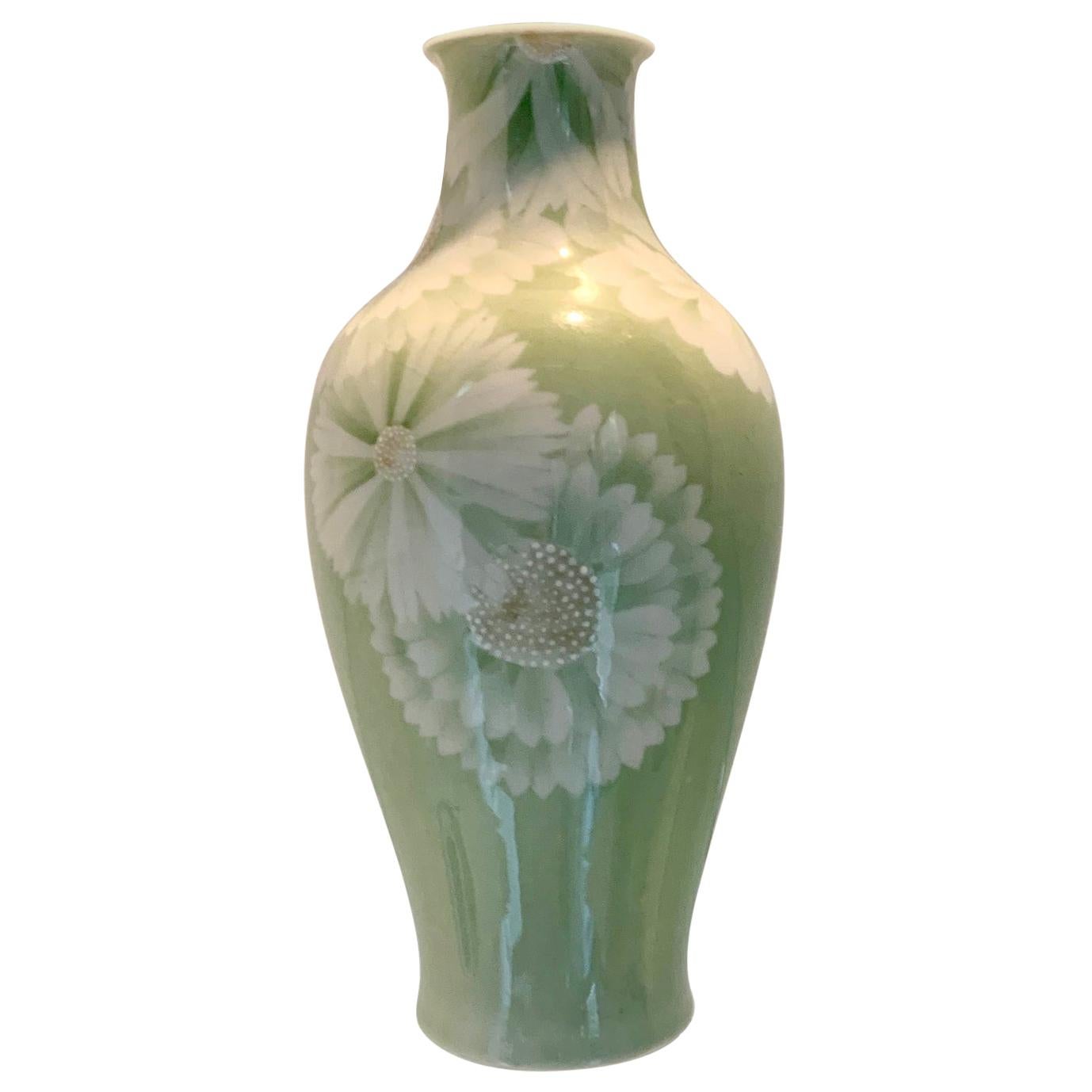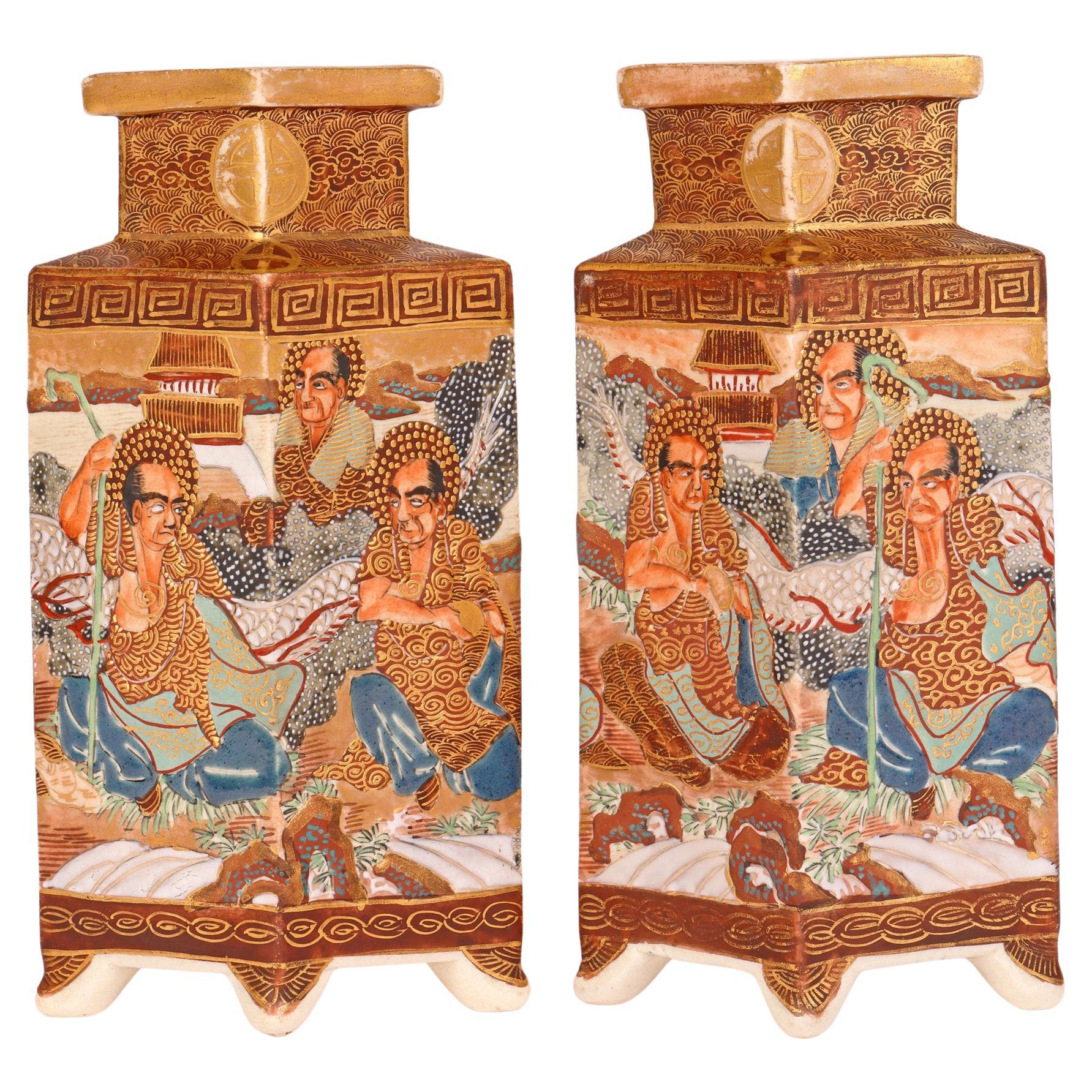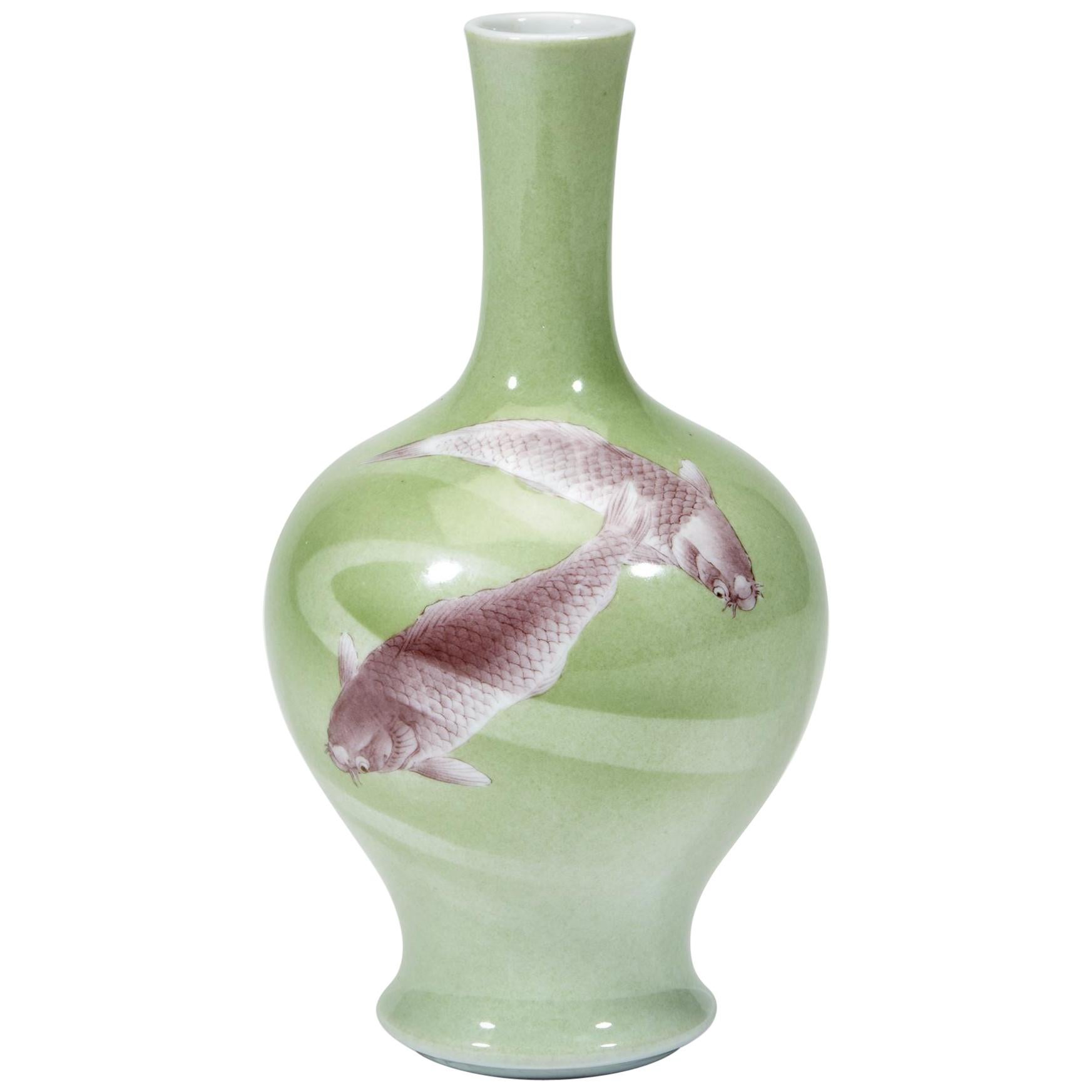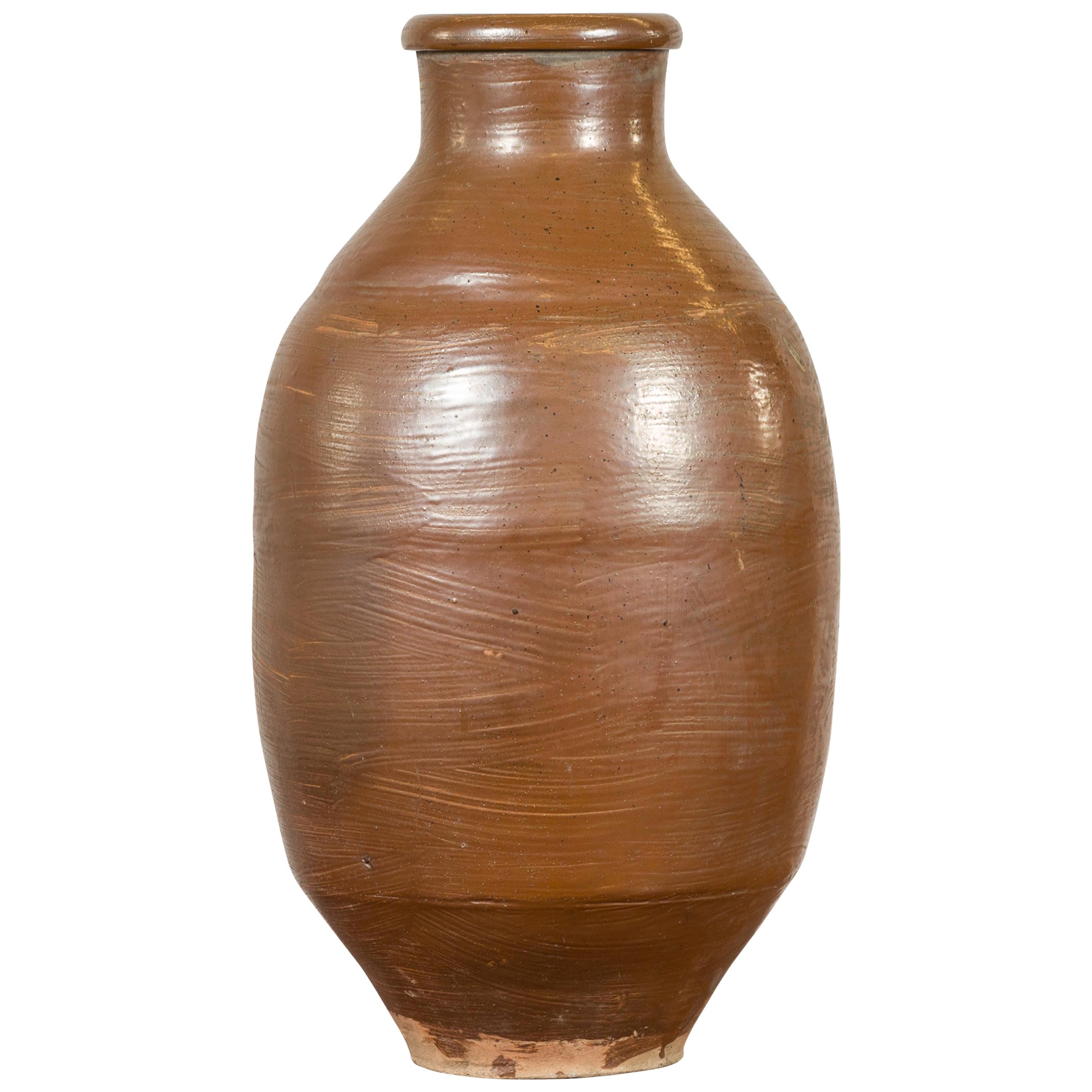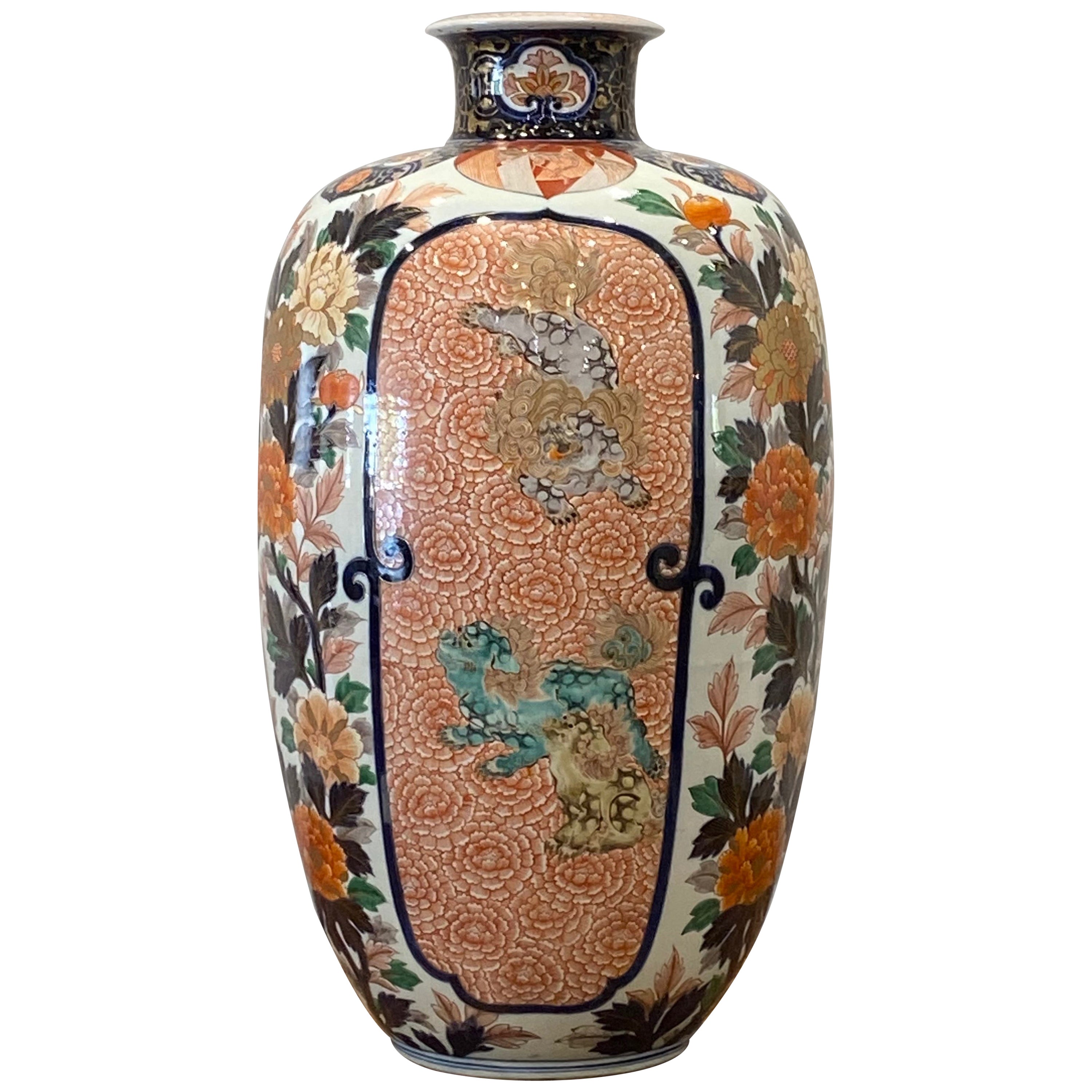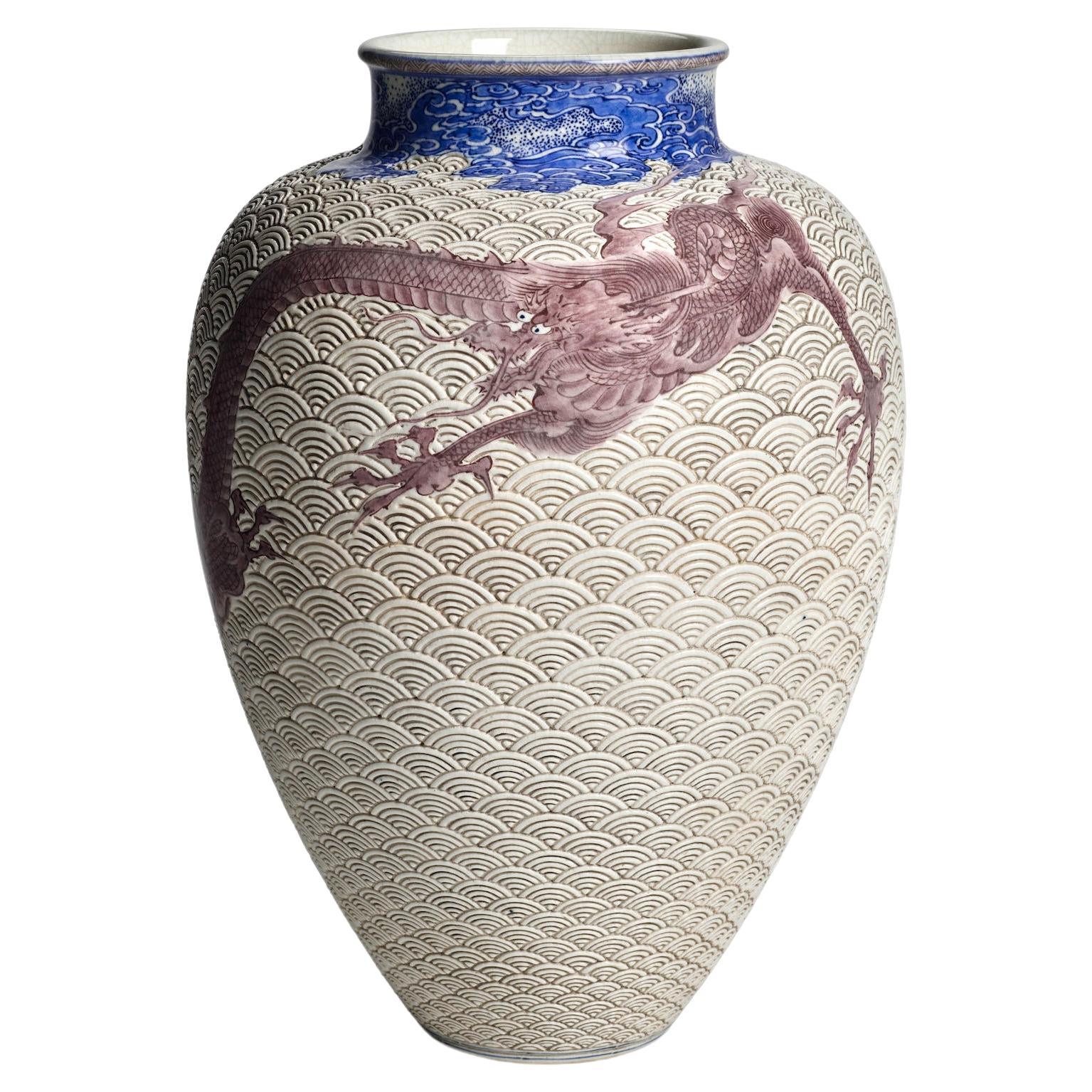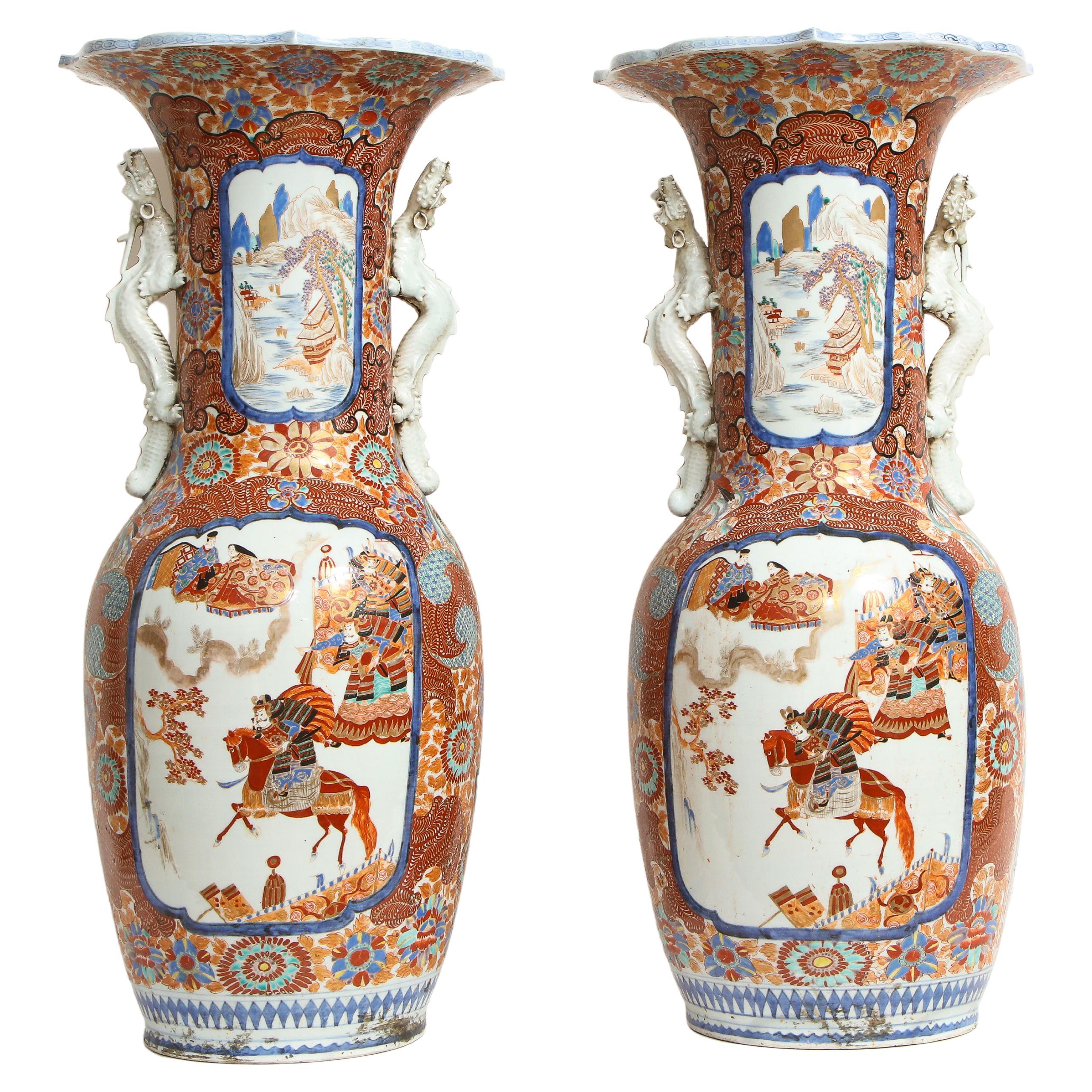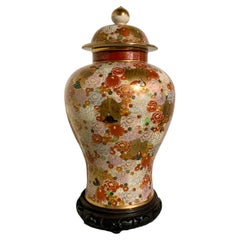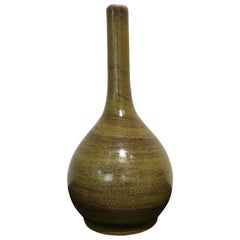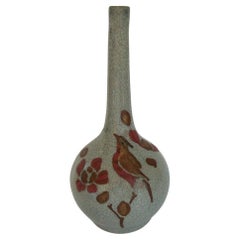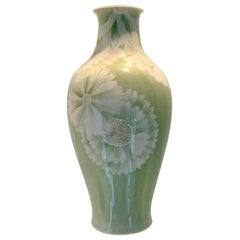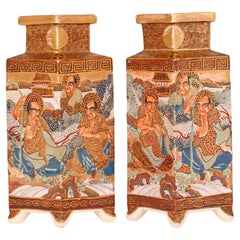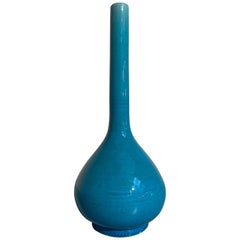
Japanese Awaji Pottery Monochrome Turquoise Stick Neck Vase, Meiji Period
View Similar Items
Want more images or videos?
Request additional images or videos from the seller
1 of 9
Japanese Awaji Pottery Monochrome Turquoise Stick Neck Vase, Meiji Period
About the Item
- Creator:Awaji Pottery (Workshop/Studio)
- Dimensions:Height: 9.5 in (24.13 cm)Diameter: 4 in (10.16 cm)
- Style:Meiji (Of the Period)
- Materials and Techniques:Porcelain,Glazed
- Place of Origin:
- Period:1900-1909
- Date of Manufacture:circa 1900
- Condition:Wear consistent with age and use. No chips, cracks or repairs noted.
- Seller Location:Austin, TX
- Reference Number:1stDibs: LU894714984262
About the Seller
5.0
Gold Seller
These expertly vetted sellers are highly rated and consistently exceed customer expectations.
Established in 2001
1stDibs seller since 2010
304 sales on 1stDibs
Typical response time: 1 hour
More From This SellerView All
- Large Japanese Satsuma Covered Vase, Showa Period, Mid 20th Century, JapanLocated in Austin, TXA very large and exuberantly decorated Japanese Satsuma millefleur covered vase, marked Satsuma, Showa period, mid 20th century, Japan. The large vase of attractive baluster form, with a slightly splayed foot, narrow waist, and tapered body with high shoulders and short neck. The vase topped by a domed cover with a large finial shaped like a hoju, the wish fulfilling jewel. The vase decorated all over in a dense field of flowering blossoms - peony, lotus, and chrysanthemum - in a design known as millefleur, or a thousand flowers. The flowers freely and cheerfully painted in various colors of red, white, orange, green, blue and yellow, with raised white enamels...Category
Mid-20th Century Japanese Showa Ceramics
MaterialsStoneware
- Chinese Eel Skin Glazed Stick Neck Vase, Qing Dynasty, 18th Century, ChinaLocated in Austin, TXA sublime and sensuous Chinese porcelain stick neck vase, with a rare eel-skin glaze, Qing Dynasty, 18th century, China. The vase is heav...Category
Antique 18th Century Chinese Qing Ceramics
MaterialsPorcelain
- Japanese Imari Charger, Meiji Period, Late 19th CenturyLocated in Austin, TXA nicely decorated Japanese Meiji Period Imari charger, late 19th century, Japan. The porcelain charger featuring a design of a hoho bird, or phoenix, per...Category
Antique Late 19th Century Japanese Meiji Platters and Serveware
MaterialsEnamel
- Japanese Satsuma Incense Burner, Koro, Meiji Period, Late 19th Century, JapanLocated in Austin, TXA fine and elegant Japanese Satsuma tripod incense burner, koro, with pierced metal lid, signed Eizan (?) Meiji Period, late 19th century, Japan. The koro, or censer, features a stoneware body of slightly compressed globular form, supported on three short and squat legs. The wide mouth with a recessed metal rim, and topped by an openwork metal lid topped with overlapping chrysanthemum blossoms of silver repousse. The body of the koro finely painted with fan shaped cartouches. The fans in the foreground with sprays of blossoming chrysanthemum. The fans in the background with intricate geometric brocade designs. The shoulder of the incense burner decorated with cartouches formed as stylized chrysanthemum petals, and intricately decorated with geometric and floral brocade designs. The painting finely done in raised gilt and polychrome enamels, including the highly desirable gosu blue...Category
Antique Late 19th Century Japanese Meiji Ceramics
MaterialsMetal, Silver
- Large Japanese Imari Gilt Charger, the Six Immortal Poets, Meiji Period, JapanLocated in Austin, TXA bold and unusual large 18.5" diameter Japanese gilt ground Imari porcelain charger featuring the Rokkasen, the Six Immortal Poets, Meiji Period, circa 1900, Japan. The impressive charger features a striking image of the Six Immortal Poets, known as the Rakkasen, seated in fenced pavilion within a lush garden setting and surrounded by numerous books and scrolls. Gnarled pine trees and and branches laden with plum blossoms tower overhead, while chrysanthemum and massive peonies bloom among rocky outcrops. The scene is unexpectedly and masterfully executed as if on a byobu, a traditional Japanese six panel folding screen. The screen is opened in a dramatic manner, slightly akimbo, almost jumping off the dish, reminiscent of the "screens within screens" genre that developed during the Edo Period. Despite the folds and changes in perspective, the painting remains harmonious and lyrical, with the fully gilt ground adding a sense of warmth and sumptuousness. The screen is bordered with a geometric bands in the shippo pattern. The shippo pattern features interlocking circles, and symbolizes the Seven Treasures. The shippo pattern on a larger scale serves at the background fo the rest of the charger. The backside of the charger decorated with two bands with underglaze blue designs. The reserve decorated with scattered stylized blossoms in iron red and gilt. The Rakkasen, known in English as the Six Immortal Poets, are a group of 9th century Heian Period waka poets whose works were included and praised by name in an anthology of poetry collected by the courtier, poet, and writer, Ki no Tsurayuki. Waka poems are a strict five line...Category
Antique Early 1900s Japanese Meiji Ceramics
MaterialsPorcelain
- Japanese Satsuma Tripod Censer, Koro, Meiji period, Early 20th Century, JapanLocated in Austin, TXA small and finely decorated Japanese Satsuma tripod incense burner (koro), signed Kyozan, Meiji period, circa 1900, Japan. The censer, koro, with a compressed body supported by t...Category
Antique Early 1900s Japanese Meiji Ceramics
MaterialsStoneware
You May Also Like
- Antique Awaji Grey Crackle Glaze Ceramic Vase - Meiji Period - Japan - C.1910By Awaji PotteryLocated in Chatham, ONAntique Awaji ceramic vase - grey crackle glaze - cold painted decoration with red and gilt enamel bird on a branch with flower and leaves - old faint inventory numbers to the base -...Category
Early 20th Century Japanese Japonisme Vases
MaterialsCeramic
- Japanese Porcelain Vase Meiji Period Makuzu KozanBy Makuzu KozanLocated in Atlanta, GAA finely decorated and glazed Japanese porcelain vase by Makuzu Kozan (1842-1916) circa 1900s Meiji Period. The vase is of a classic bottle form with baluster body and short neck. It was decorated with underglaze white magnolia blossom on a pleasant celadon background. The stamens of the flower were artistically rendered in a low relief, giving the design a realistic appeal with the dimension. Miyagawa Kozan...Category
Early 20th Century Japanese Meiji Ceramics
MaterialsPorcelain
- Satsuma Japanese Meiji Pair Diamond Shaped Pottery VasesBy SatsumaLocated in Bishop's Stortford, HertfordshireA good and unusual pair antique Japanese Satsuma Meiji diamond shaped pottery vases decorated with monk figures with a scrolling dragon dating from the 1...Category
Antique 19th Century Japanese Meiji Ceramics
MaterialsPottery
- Fine Japanese Ceramic Vase Makuzu Kozan Meiji PeriodBy Makuzu KozanLocated in Atlanta, GAA Japanese long neck porcelain vase circa 1900-1910s by the studio of Miyagawa Kozan (1842–1916), one of the most established and collected Japanese ceramist from the end of Meiji Period. Commonly known as Makuzu Kozan, which also appears as the signature on his work, his originally birth name was Miyagawa Toranosuke. He was the appointed artist to the Japanese Imperial household and his work was exhibited in many international fairs that the Meiji government participated at the turn of the century. This vase features an elegant Classic form with a slender neck and slightly flared mouth above a baluster body. It was finely painted with two swimming carps in a copper red underglaze among green ribbons like waves. The background display a brilliant verdant green overall, Around the fish a poetic hazy effect was emphasized for a visual complexity by Fuki-e (the blow painting), an invention in Kozan's studio. The new technical development of chemical colors from the west was embraced circa 1900s in Kozan studio. This empowered the more creative experiments with not only colors, but also concept of dimension, which led Makuzu Kozan's work to become a bridge between East and West aesthetics. This is particularly evident in this vase with the Masterly details of the brush strokes, the expertly employment of gradient of color, and a very realistic and detailed rendering of the fish and their vivid motions. For two similar examples of Kozan's work with similar carps decoration, see Page 148-149 of the book: Sekai ni Aisa Reta ya Kimono Miyagawa Kozan Makuzu...Category
Early 20th Century Japanese Meiji Ceramics
MaterialsCeramic
- Japanese Meiji Period 19th century Water Jar with Brown Monochrome PatinaLocated in Yonkers, NYAn antique Japanese Meiji period monochrome water jar from the 19th century. Created in Japan during the Meiji dynasty, this water jar attracts our attention with its brown monochrom...Category
Antique 19th Century Japanese Meiji Ceramics
MaterialsPottery
- Japanese Mishima Ceramic Vase Meiji PeriodLocated in Atlanta, GAA Japanese long neck slender ceramic vase in the style of Mishima, circa 19th century, Meiji period. Mishima pottery was originally imported from three islands in Taiwan and then fro...Category
Antique 19th Century Japanese Japonisme Ceramics
MaterialsCeramic
Recently Viewed
View AllMore Ways To Browse
Japanese Circa
Long Neck
Antique Blue Glaze
Meiji Period Japan
Antique Turquoise Furniture
Turquoise Antique Furniture
Turquoise Glazed
Art Pottery Blue
Fine Art Pottery
Turquoise Ceramics
Monochrome Furniture
Japanese Glazed Pottery
Japan Glazed Pottery
Antique Asian Pottery
Peacock Blue
Antique Pottery Vase Art Pottery
Antique Porcelain Pottery
Antique Pottery And Porcelain

